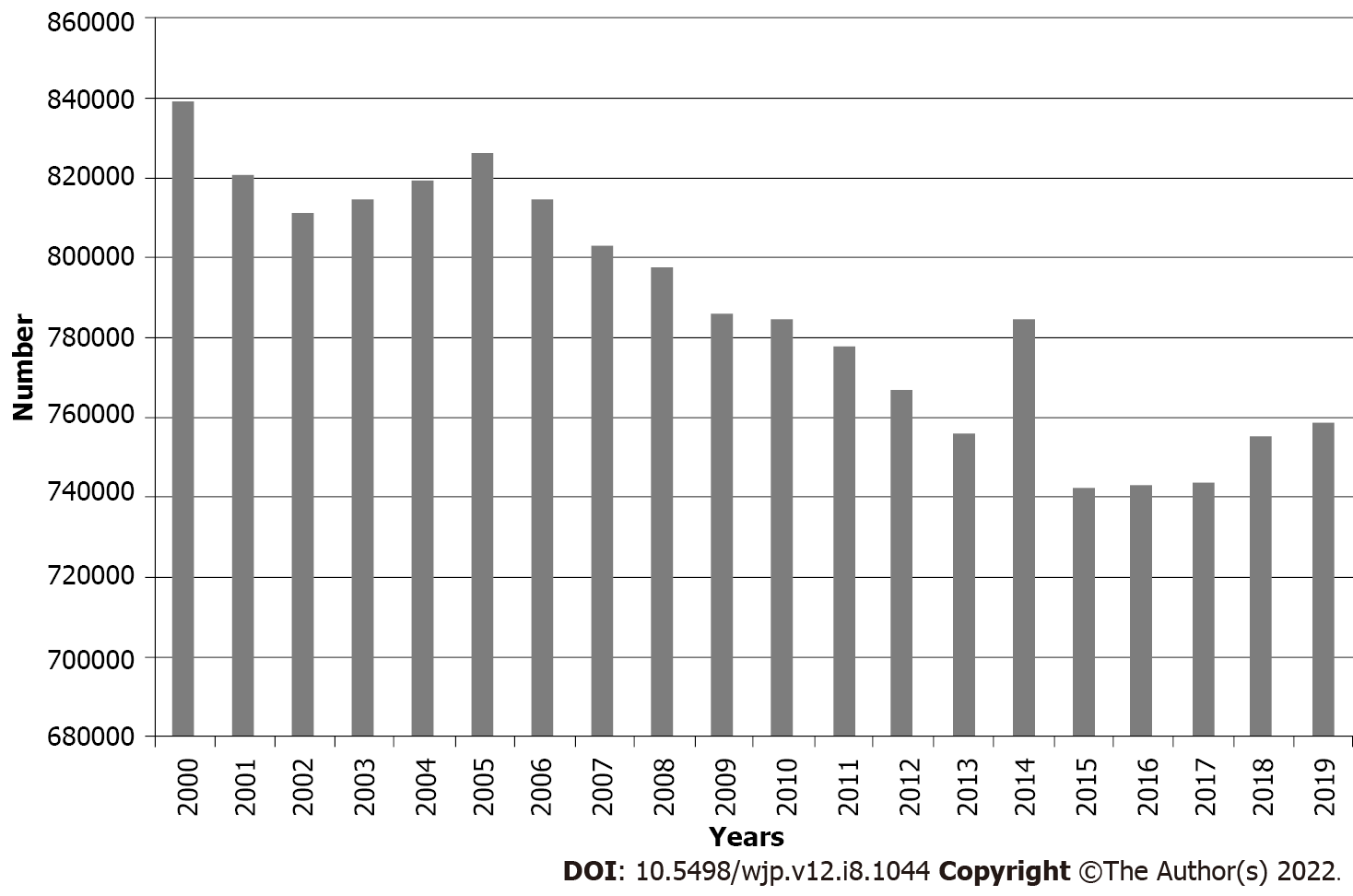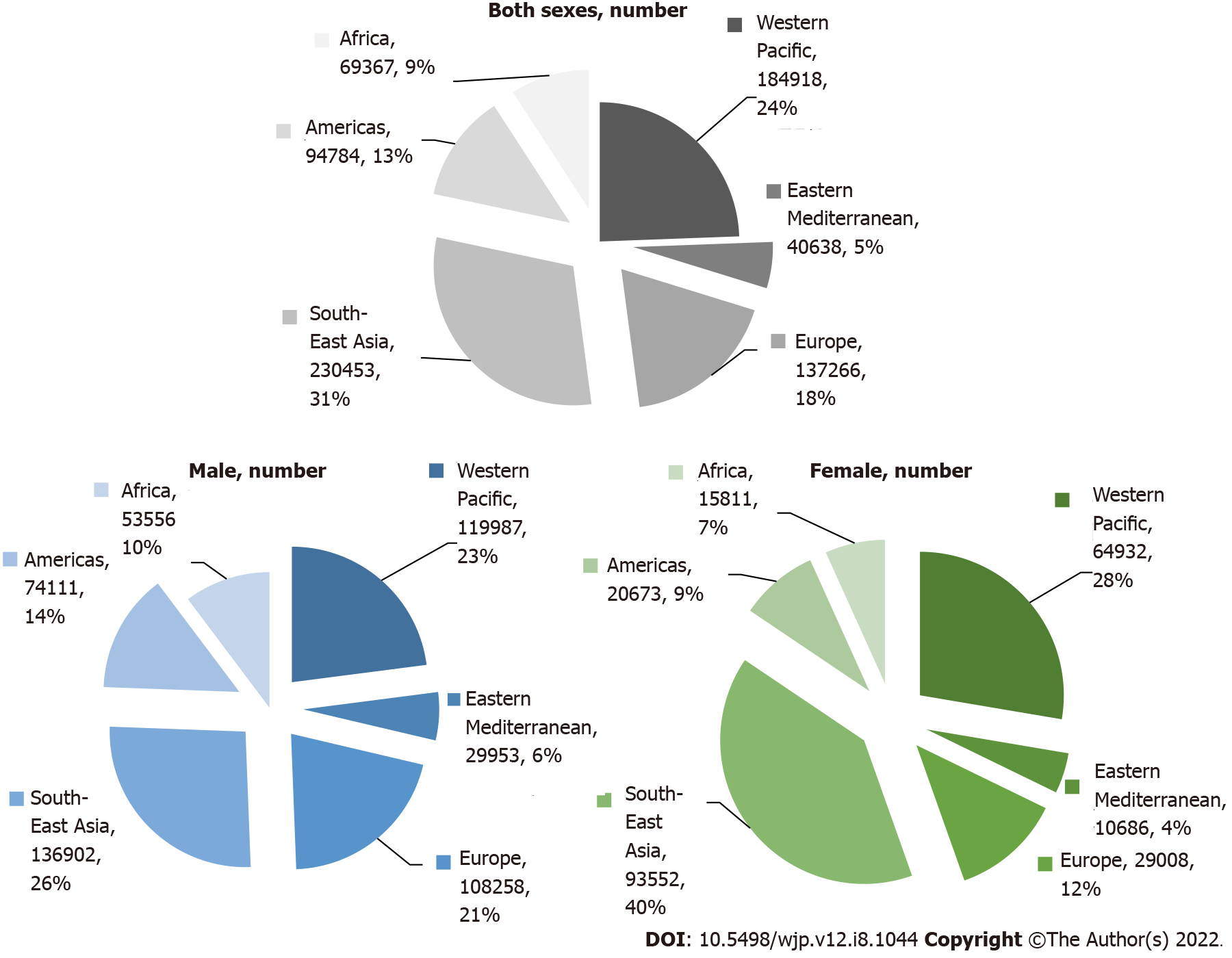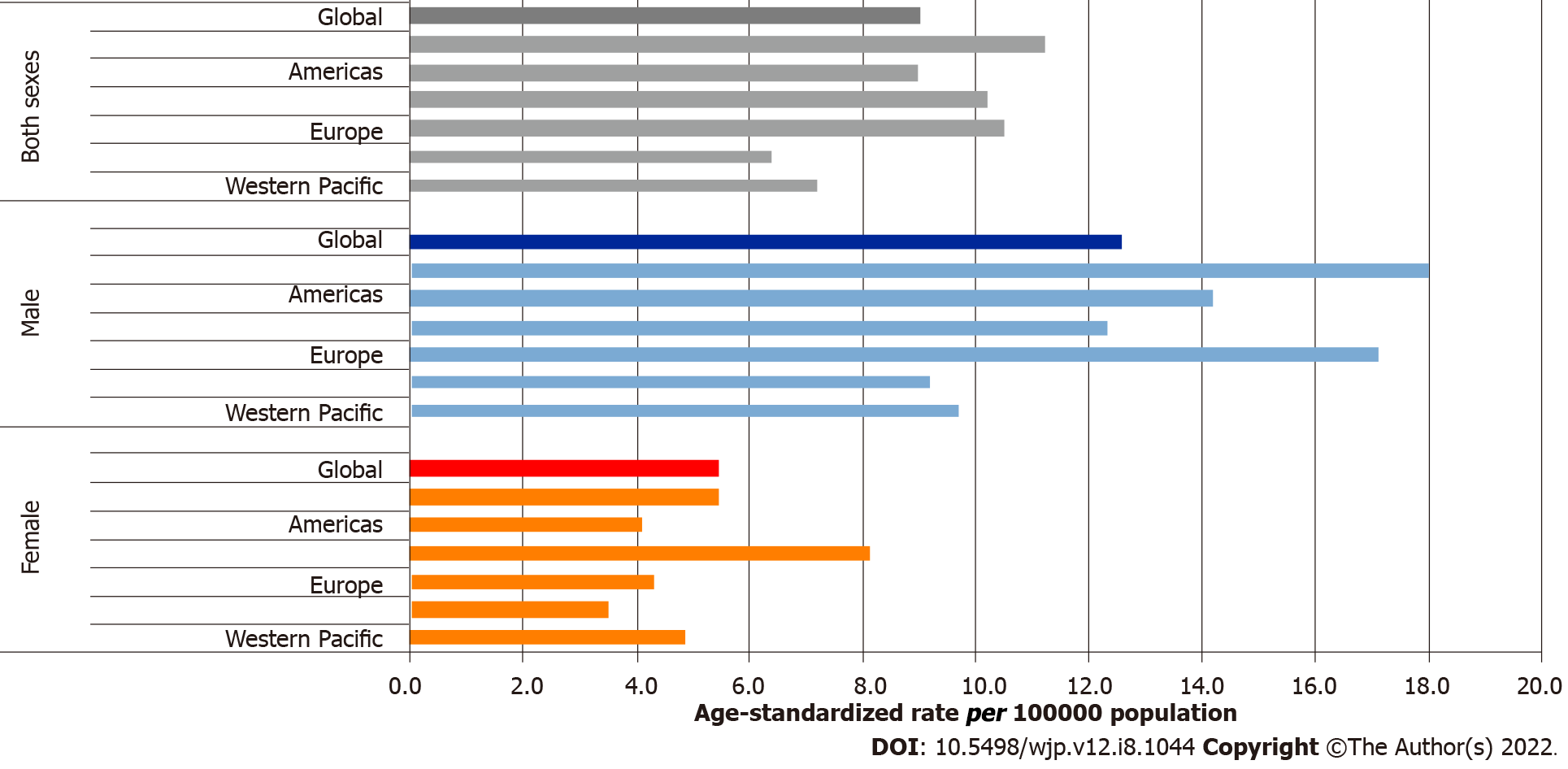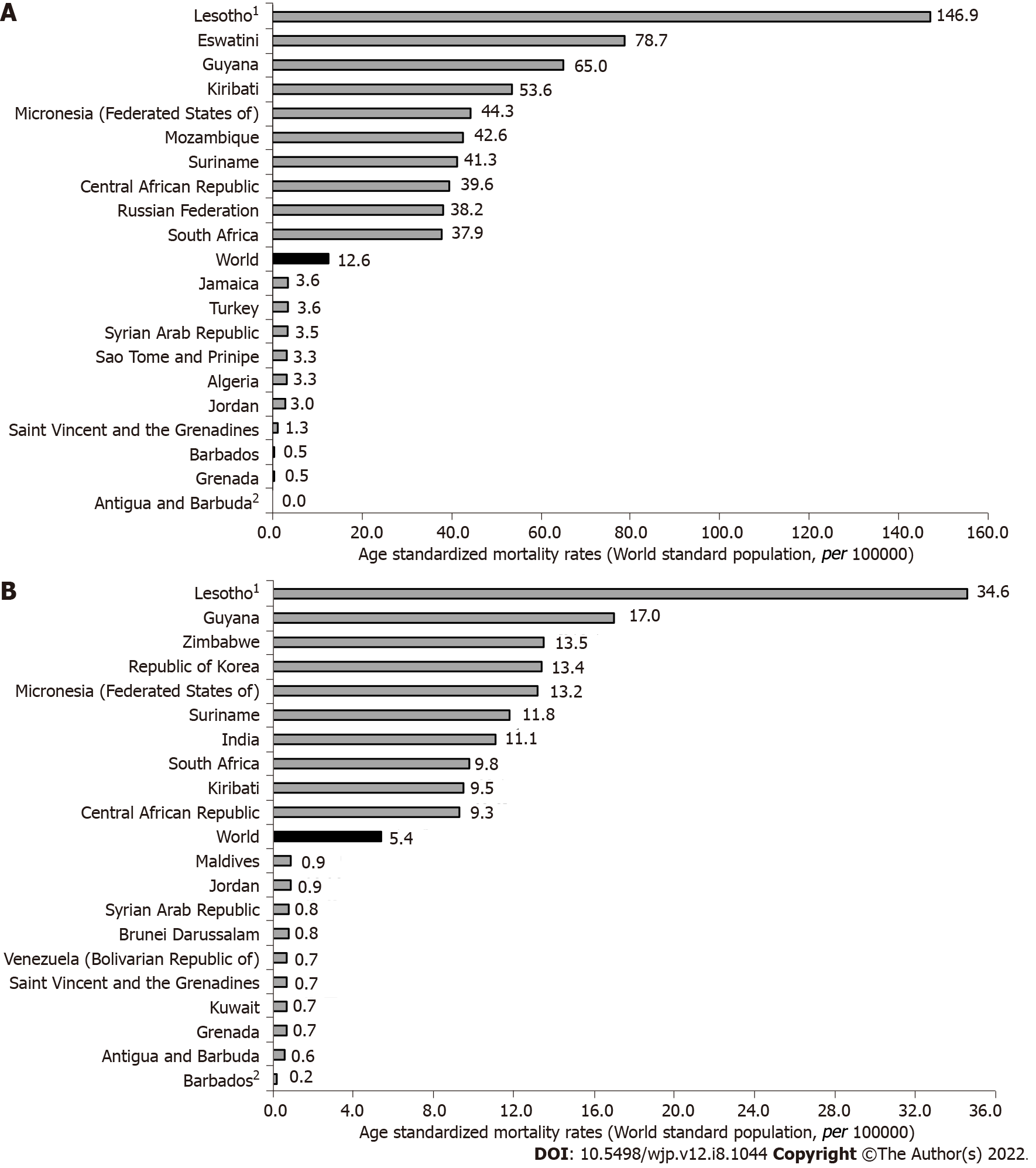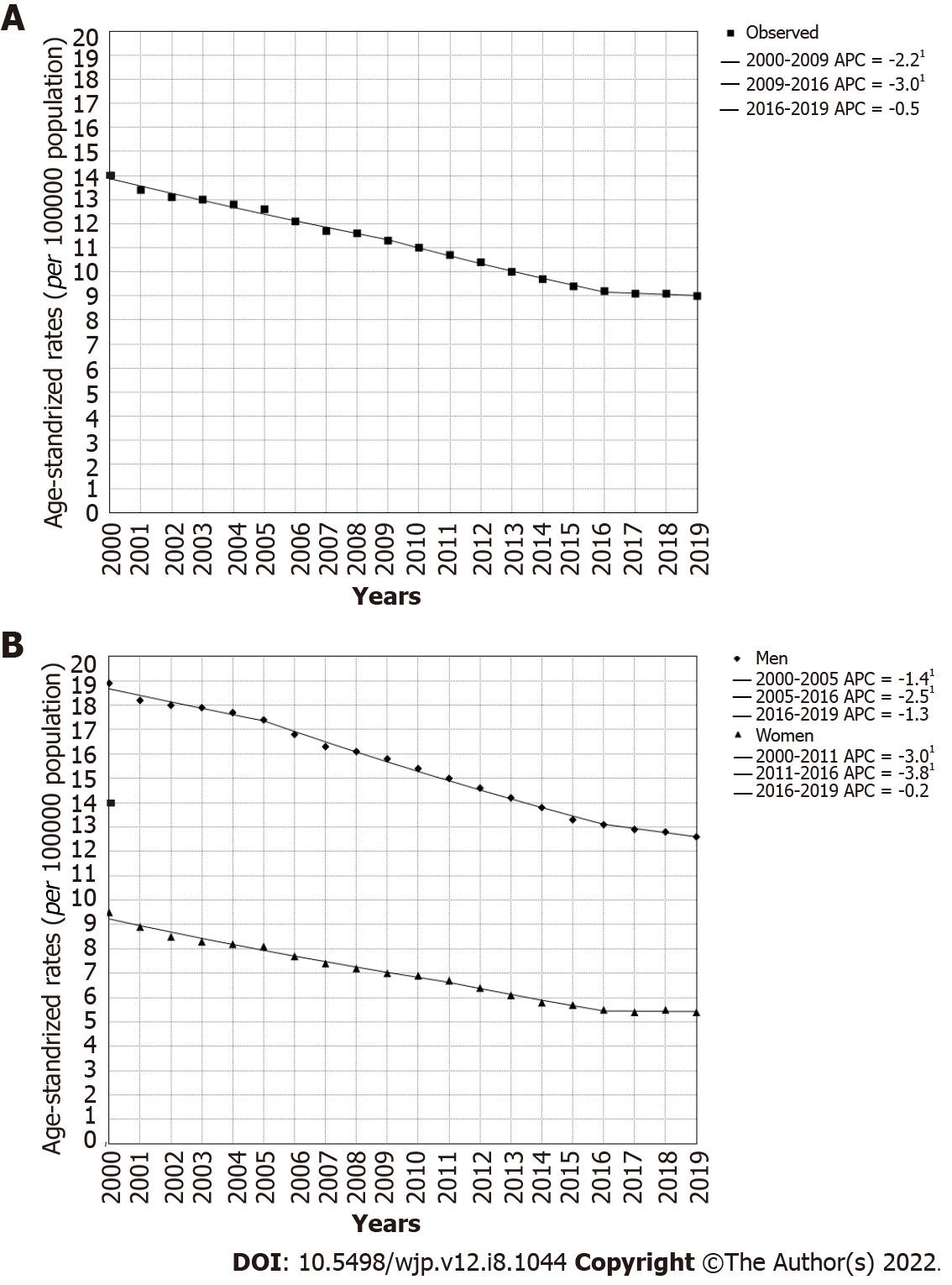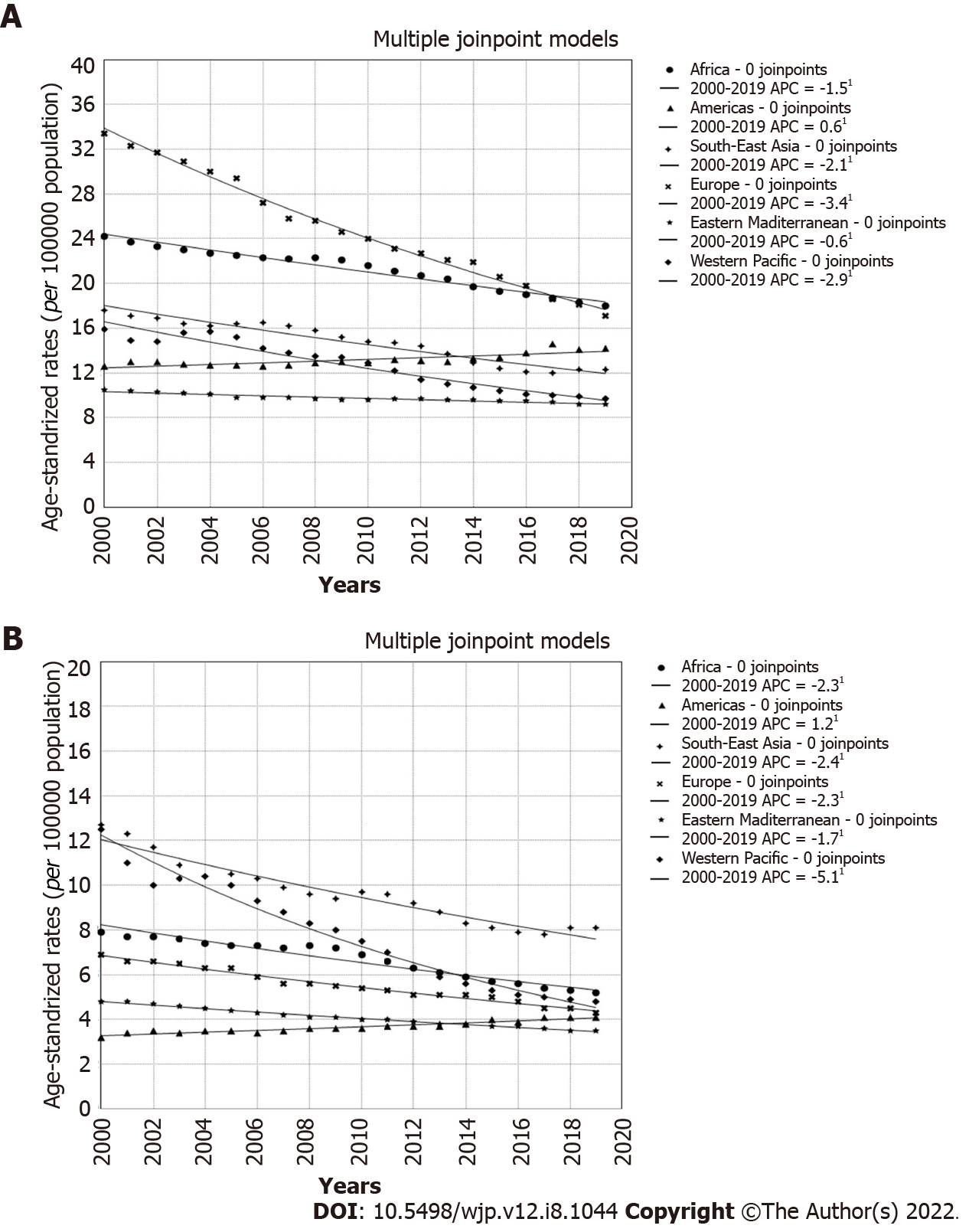Copyright
©The Author(s) 2022.
World J Psychiatry. Aug 19, 2022; 12(8): 1044-1060
Published online Aug 19, 2022. doi: 10.5498/wjp.v12.i8.1044
Published online Aug 19, 2022. doi: 10.5498/wjp.v12.i8.1044
Figure 5 Joinpoint regression analysis of global suicide mortality.
1Indicates that the Annual Percent Change is significantly different from zero at the alpha = 0.05 level. Final selected model: 2 joinpoints. A: Both sexes, 2019: 2 joinpoints; B: By sex, 2019: Men: 2 joinpoints vs women: 2 joinpoints. APC: Annual percent change. Source: World Health Organization[6] and Global Burden of Disease estimates[7].
- Citation: Ilic M, Ilic I. Worldwide suicide mortality trends (2000-2019): A joinpoint regression analysis. World J Psychiatry 2022; 12(8): 1044-1060
- URL: https://www.wjgnet.com/2220-3206/full/v12/i8/1044.htm
- DOI: https://dx.doi.org/10.5498/wjp.v12.i8.1044









